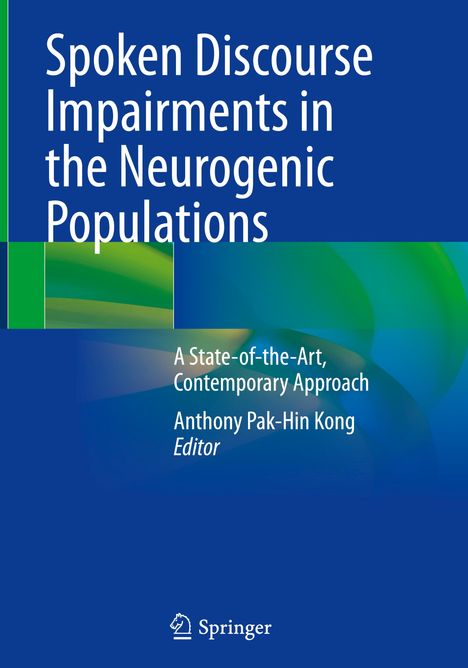Spoken Discourse Impairments in the Neurogenic Populations
Spoken Discourse Impairments in the Neurogenic Populations
Buch
- A State-of-the-Art, Contemporary Approach
- Herausgeber: Anthony Pak-Hin Kong
- Springer International Publishing, 02/2024
- Einband: Gebunden, HC runder Rücken kaschiert
- Sprache: Englisch
- ISBN-13: 9783031451898
- Artikelnummer: 11756494
- Umfang: 428 Seiten
- Nummer der Auflage: 24001
- Auflage: 1st ed. 2023
- Gewicht: 1094 g
- Maße: 260 x 183 mm
- Stärke: 27 mm
- Erscheinungstermin: 7.2.2024
Achtung: Artikel ist nicht in deutscher Sprache!
Klappentext
This comprehensive volume provides balanced and easily readable chapters on contemporary topics around discourse production in patients with neurogenic disorders. Discourse broadly refers to a unit of language longer than a single sentence, typically used in a spoken or written format to express ideas, feelings, and opinions or to interact with others. As the field of research in speech-language pathology, aphasia and related neurogenic disorders, and clinical decision-making to manage neurogenic impairments is rapidly expanding, there has been an increased focus on discourse analysis and therapy to enable patients to speak well again. Various user groups and people with lived experience (e. g., aphasia, dementia, traumatic brain injury, right hemisphere damage, etc.) are also increasingly focused on the impact of neurogenic impairments on domains of conversation and changes in language skills beyond the smaller linguistic components of single words and sentences that are traditionally supported by speech-language therapy.The first part of this book details and discusses the basic principles, historical perspectives (history and developmental milestones), neural basis, and recent evolutions and advancement of discourse analysis in speakers with acquired communication disorders. The second part of the book outlines and illustrates current methods for discourse elicitation and analysis across different clinical populations. Recent leaps forward in technology that can assist in the recording, processing, and analysis of discourse will be highlighted. The final part of book reviews and summarizes key developments of various evidenced-based training strategies, interventions, and treatment programs, as well as utilization of innovative technology to clinically improve neurogenic disordered discourse.
This is an ideal guide for researchers, clinicians, and students in the field of communication sciences and disorders, speech and language therapy, gerontology, (neuro-)linguistics, psychology, and related fields in clinical medicine.


